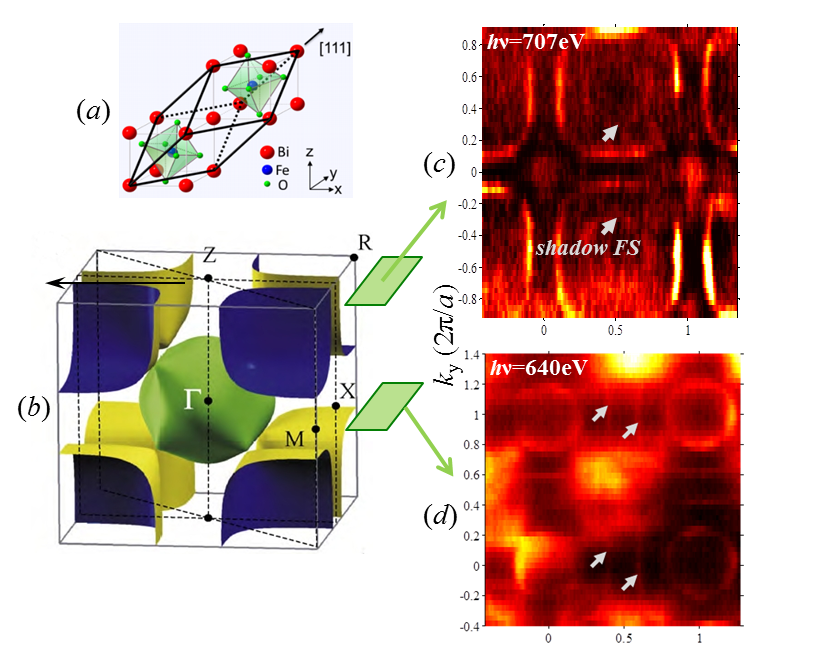Fermi Surface of Three-Dimensional La1−xSrxMnO3 Explored by Soft-X-Ray ARPES: Rhombohedral Lattice Distortion and its Effect on Magnetoresistance
A research team led by scientists from the Swiss Light Source has for the first time established three-dimensional (3D) electronic structure of the perovskite compound La1−xSrxMnO3 connected with its colossal magnetoresistance. Instrumental for this study has been the use of the new experimental technique of soft-x-ray ARPES, available at the ADRESS beamline, with its intrinsically sharp definition of 3D electron momentum. The experimental results show that the polaronic coupling, essential for the magnetoresistance transition and manifesting itself as a peak-dip-hump spectral structure, is much weaker compared to the bilayer manganites. The long-sought-for experimental Fermi surface (FS) unveils the canonical topology of alternating 3D electron spheres and hole cubes (see the Figure) without any regions of the spectral weight depletion indicative of the polaronic pseudogap. The shadow contours of the experimental FS, reminiscent of those in cuprates high-Tc superconductors, manifest the rhombohedral lattice distortion rather than any magnetic order. This interpretation has been confirmed by one-step photoemission calculations including displacement of the apical oxygen atoms, performed by a group of theorists from LMU Munich. The rhombohedral distortion is neutral to the Jahn-Teller effect and thus polaronic coupling, but reduces the double-exchange electron hopping. In interplay of the polaronic self-localization and double-exchange delocalization in the La1−xSrxMnO3 electron system, the discovered effect reduces the colossal magnetoresistive transition temperature.
